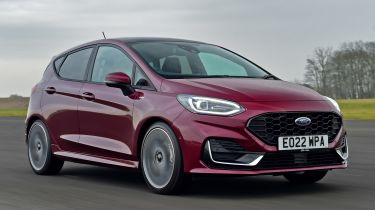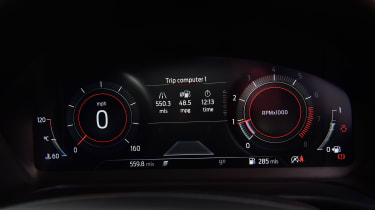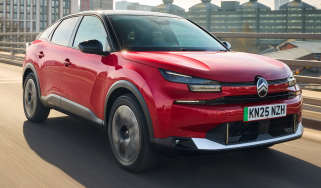Ford Fiesta (2017-2023) review - MPG, CO2 and running costs
The Fiesta has petrol engines that feature mild-hybrid technology which, along with low insurance costs, mean that the Ford Fiesta should be pretty efficient to run

Part of the magic of cars in the supermini class is that they can be fun to drive, more so than some much more expensive cars, without being pricey to run. The new Ford Fiesta is no exception to that rule, and its range of small-capacity petrol, hybrid and diesel engines are very frugal.
It’s not just about fuel economy, as purchase price and even the cost of fuel plays a big part in how cheap a car is to run. The petrol 1.0-litre EcoBoost with 99bhp provides a good overall package, however, returning up to 51.4mpg and emitting 125g/km of CO2.
The 123bhp manual version is able to return 56.5mpg on the combined cycle, while emitting just 114g/km of CO2. The extra power of the 153bhp hybrid (now removed from the price list) brings hardly any penalty to overall efficiency, with 56.5mpg and 113g/km.
For buyers wanting more miles from a tank of fuel, it might make sense to track down a used diesel model, as it returned the highest mpg figures of the range. The 84bhp 1.5-litre TDCi was the ultimate choice for economy, thanks to figures of 65.7mpg and 112g/km of CO2.
Insurance groups
Entry-level Fiesta Trend cars with the 74bhp 1.1-litre petrol are the cheapest to insure, sitting in insurance group 4E. The 99bhp EcoBoost model in Titanium trim, sits in group 10E - that should make it very affordable for most drivers to insure. However, the 197bhp ST-3 model incurs a higher premiums being in group 28E.
Our Car Tax Checker tool lets you check your tax status and renewal date in seconds. Check your VED car tax now...
Depreciation
Experts tell us that after three years and an average of 36,000 miles, a Ford Fiesta will hold on to around 49 per cent of its value, which is pretty good for such a popular car in the UK. The ST-3 model fares slightly better, retaining 52 per cent over the same period, while the Fiesta Active versions average around 48 per cent over the same three-year period.
To get an accurate valuation on a specific model check out our valuation tool...












